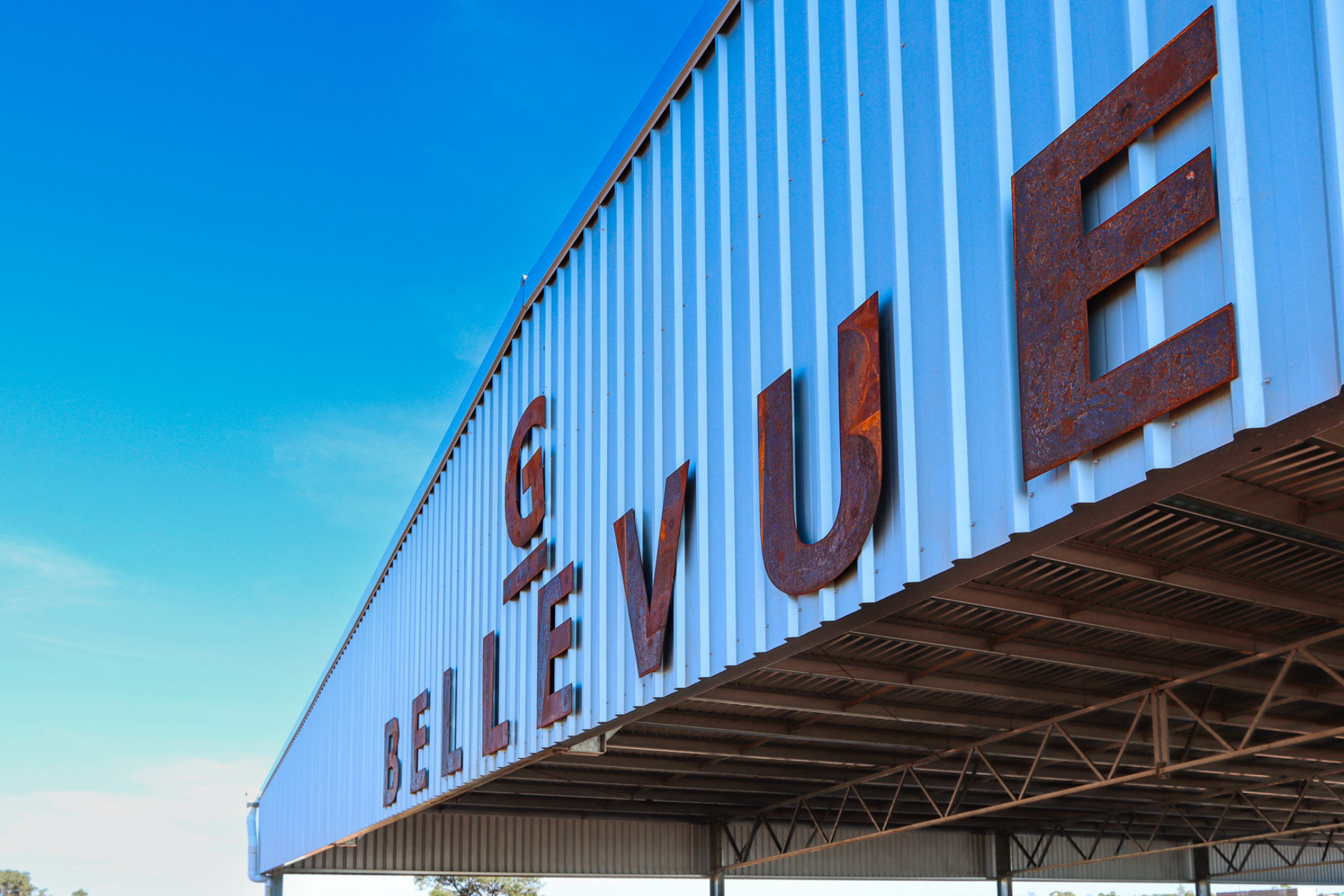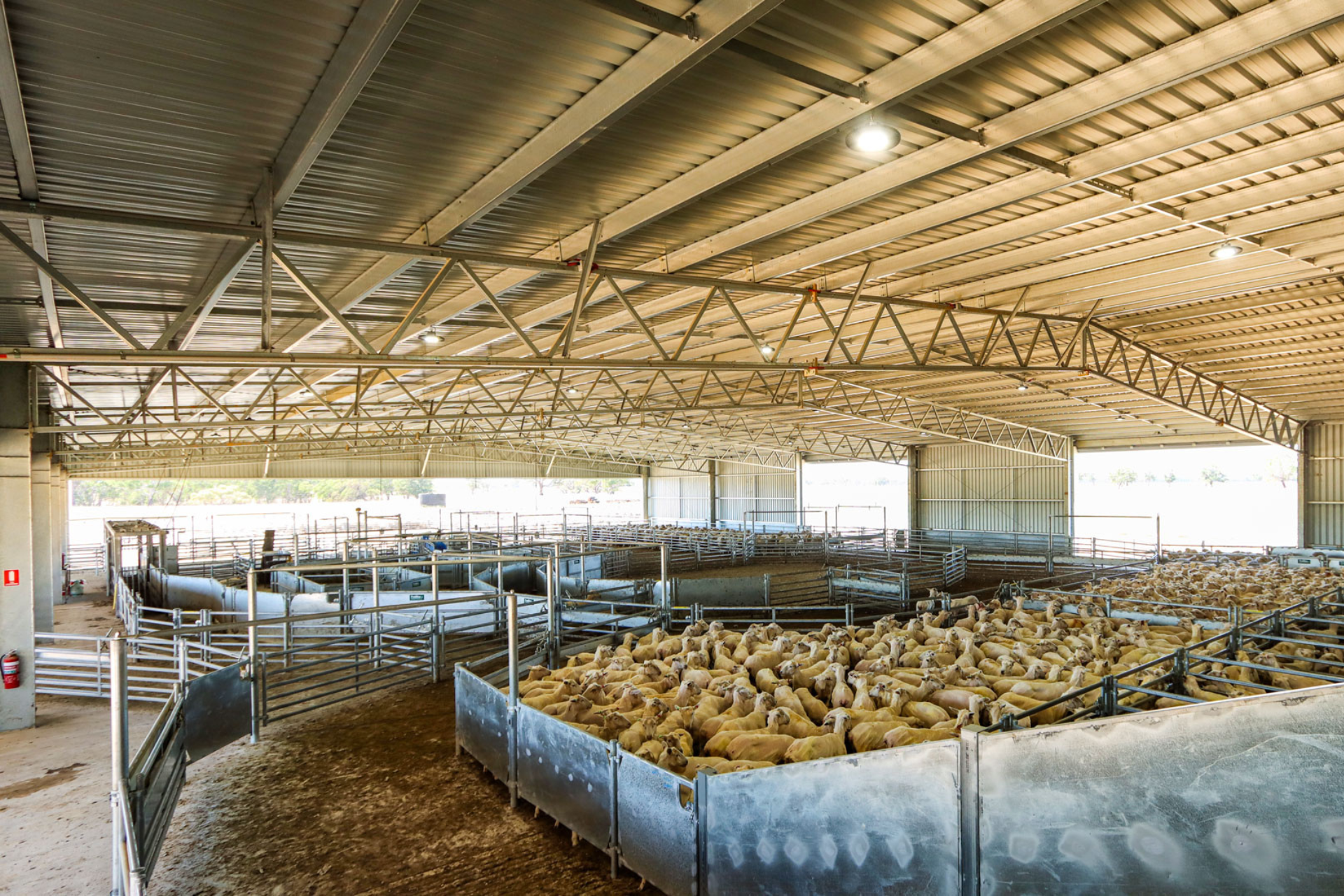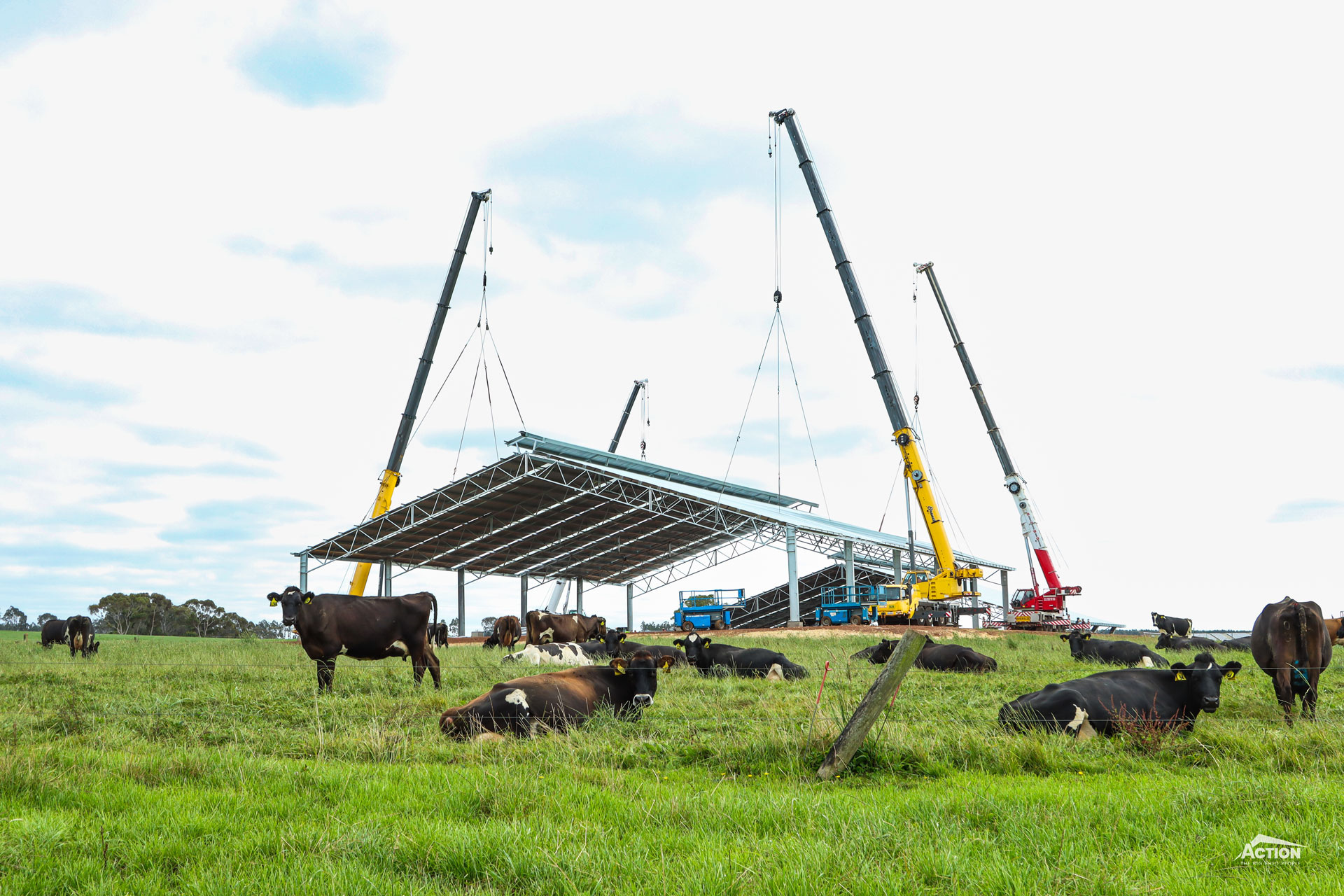Looking for ways to save money on your shed project?
No one wants to pay more than they need to. So, how can you make sure you are getting the best value for your money? What are some ways to save money on your farm shed?
Firstly, there are a lot of ways to build a cheap shed. However, these usually result in a lower quality product.
For example, your shed builder might use a thin grade of cladding. While this will reduce the overall cost of your project, the cladding will be damaged more easily than standard thickness cladding and therefore, won’t last as long.
Or you might be weighing up between a hot dip galvanised shed frame and a painted or pre-galvanised shed frame. A pre-galvanised or painted shed will cost less than a hot-dip galvanised shed. However, they will also provide less effective corrosion protection and will require more repairs and maintenance.
Another “cheaper” option for a farm shed is the frame construction. For example, the cheapest shed frame construction is usually a purlin shed. But a purlin shed can buckle or twist! This is because a purlin shed frame is around six times lighter than a heavy-duty UB column and open web truss construction.
So, remember not to overlook quality.
Here at Action Steel, our mission is to be passionate about quality sheds and making people happy by doing the right thing – every time – every day.
Therefore, in this article, we’ll discuss 9 ways you can save money on your farm shed project without reducing the quality.
We also discuss the importance of considering short-term costs versus long-term costs. And the article includes some useful resources for budgeting for your shed project.
Read on to find out how to build a cost-effective farm shed and how to get the best value for your money.

9 Ways To Save Money On Your Farm Shed
1. Choose A Standard Size
One of the most effective ways to save money on your farm shed project is to choose a ‘standard’ size span.
Our standard span range is a range of span sizes that have been designed specifically for farm sheds. These range from 12 metres through to 60 metres clear span! Some of the most popular sizes in this range include 18 metres, 21 metres, 24 metres and 27 metres.
The advantage of these spans is that a new truss jig does not have to be set up for each shed being manufactured. This saves you both time and money on your shed project.
The size of the bay spacings (also known as bay widths) in your shed can also impact the price of your shed. For example, bay widths of 8.5 metres are often the most cost-effective for hay sheds and machinery sheds as they make the best use of the purlins in the shed.
2. Choose A Cost-Effective Configuration
Some configurations are more cost-effective than others.
For example, for a hay shed, a long, narrow shed configuration usually has a lower cost-per-bale than a wider and shorter configuration.
Similarly, if you need a wide access point for your machinery, a drive-through shed configuration is the least expensive way to achieve this.
Also, if you are storing long machinery, a drive-through machinery shed configuration is usually more cost-effective than an open-front shed with a wide span.
And if you are building a shearing shed, it might be a good idea to choose a configuration that includes adjoining covered yards. This is because covered yards typically cost less than having grating area in your shearing shed.
3. Allow For Additions
Looking for ways to save money on your project because you are working on a strict budget? Or are you currently limited by cash flow?
If this is the case for your project, it might work for you to make additions to your shed in the future.
There are a few ways you can do this.
For example, our shed design makes it easy to add extra bays to your shed later. It is important to plan ahead though, to make sure your shed site will be able to accommodate the extension.
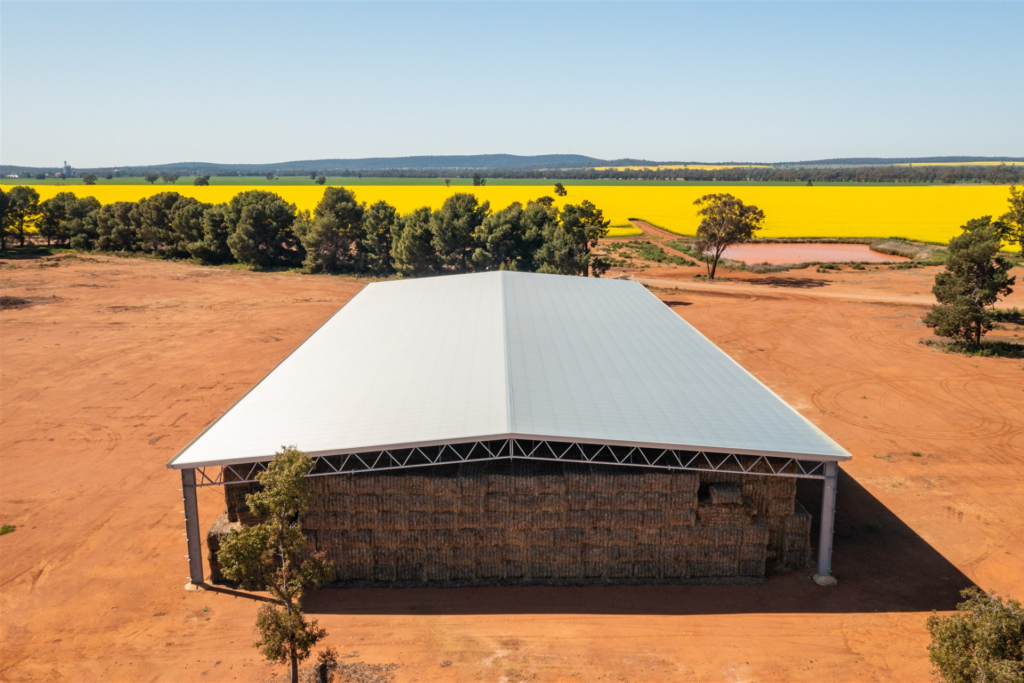
Another option to consider is to build a roof-only shed now and then clad the walls at a later date. If you do decide to do this, let us know prior to manufacturing so that the required cleats can be added (at no additional cost). This means the frame will be completely hot dip galvanised.
Remember though, that the one dimension that is very difficult to change in the future is the height of the shed.
So, we don’t recommend skimping on height to try and save money, particularly for machinery sheds where clearance is important. And, for hay sheds, increasing the height of the shed can actually be a cost-effective way to fit a few more bales in – provided it is safe for loading and unloading!
4. Install A Canopy
The cost-saving advantage of a canopy is one of the reasons canopies are so popular.
A canopy is a cost-effective way to gain some extra storage area without increasing the overall size of the shed.
To give you an idea of how much a canopy would add to your project, a canopy generally costs between $110 and $150 per square metre.
Also, like cladding, provision can be made during manufacturing for a canopy to be added to your shed in the future.
5. Choose a Versatile Design
If saving money is a priority for your farm shed build, choose a versatile shed design. This ensures you get the most out of your investment.
For example, an open-front storage shed is a very versatile option. An open-front grain shed can easily be used to store hay or machinery when grain storage isn’t a requirement.
Or vice versa. An open-front machinery shed can be retrofitted with self-supporting concrete panels and repurposed as a grain shed.
6. Write-Off Your Shed As A Tax Deduction
Keep in mind when building a new farm shed, that your shed could potentially be used as a tax deduction.
Temporary full expensing, which has been extended to 30th June 2023, allows the full cost of an eligible asset to be written off.
You can learn more about this incentive, here.
Or, if you are a primary producer building a hay shed or grain shed, the full write-off of fodder storage assets is still currently available.
You can learn more about this incentive, here.
7. Install Skylights
Skylights aren’t suited for every farm shed build. But they might be worth considering if you are building a shearing shed, yard cover or machinery shed.
Skylights can help you save money by taking advantage of the available natural light and reducing your electricity bill.
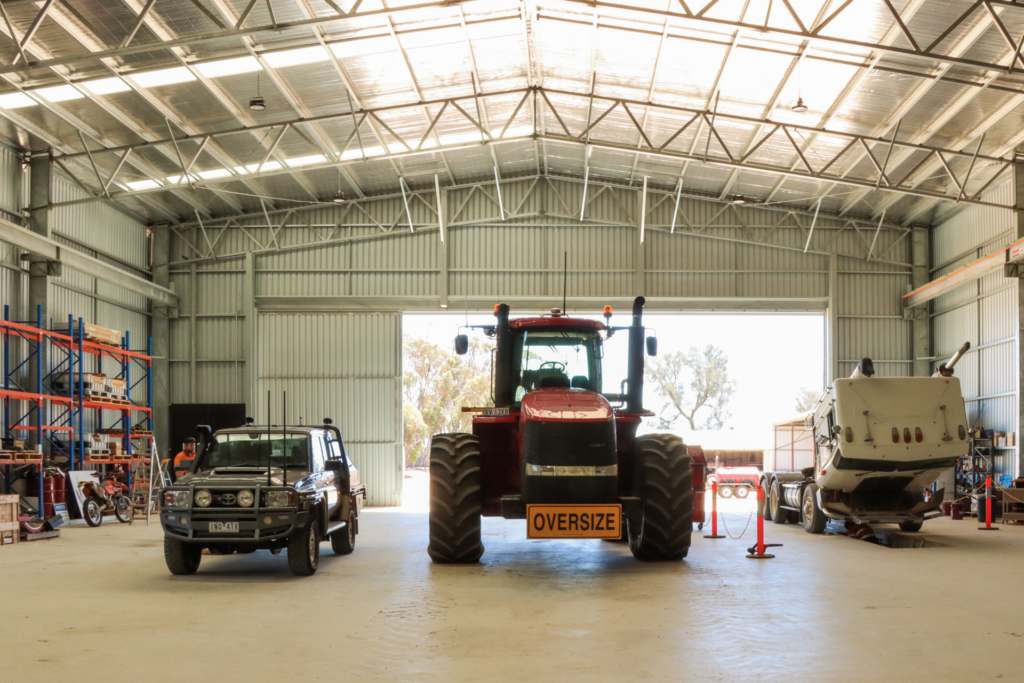
8. Comparing Quotes
One of the most important steps to saving money on your shed project is knowing how to compare quotes from different shed builders.
The reason for this is that not all sheds are created equal, and this may not be immediately obvious when looking at the quotes.
Make sure you are comparing ‘apples with apples’ when it comes to frame construction, material sizes and corrosion protection.
It is also important to have a good look at what a shed quote could exclude, which may result in further project costs.
The key exclusions or inclusions to check on your quote include:
- Concrete costs
- Delivery costs
- Erection costs
- GST
- Permit costs
This is arguably the most important step as not all shed companies will include these items in their quote. Or they may only include it in the fine print. Checking for exclusions will help you accurately compare quotes and help you budget for your shed project – and it could save you money!
9. Do-It-Yourself
Another way to save money when building a farm shed project is to manage some of the project stages yourself. These stages could include the permit application, delivery, concrete and footings and installation.
For example, we arrange council permits on your behalf via a private building surveyor, who typically charges more than your local shire council. (You can learn more about why we work with a private building surveyor, here.)
Or if you have a truck available, it may make sense to pick the shed up yourself, rather than have the shed delivered.
Having said that, while a do-it-yourself approach may be a cost-saving, it does come at the expense of your time – and as the saying goes: time is money!
So, it is important to weigh up whether this would be beneficial for you. Is the money you save worth the extra time spent – and maybe even extra stress?
There you go! That’s 9 ways you could save money on your farm shed build!
If you would like more suggestions on how to make sure you get the best value for your money on your farm shed project, please don’t hesitate to get in touch!
Our building consultants are always more than happy to quote different configurations and designs for your shed, to help you determine which option will work best.
Before we finish this article, we should point out that it is important to keep in mind the long-term cost versus the short-term cost.
Long-Term Cost Versus Short-Term Cost
This probably seems like common sense, but remember that a ‘cheaper’ option now, can cost you more in the long term.
A prime example of this is corrosion protection, which we briefly discussed in the introduction.
Another example is site preparation. A poorly prepared shed site can result in limited access to your shed. Or it could result in drainage issues with run-off damaging the contents of your shed.
So, before cost-cutting on your shed project, make sure you are not setting yourself up for additional costs in the future.
Below are some articles and videos you might find useful for your project planning.
Useful Resources
- Top Ten Tips For The Ideal Shed Pad
- 5 Hidden Costs Of A Farm Shed Project
- What Is The Lead Time For A Farm Shed?
- Farm Shed Price Guides
For more articles like this one, check out our Learning Hub. Or learn more about our farm shed range, here.


